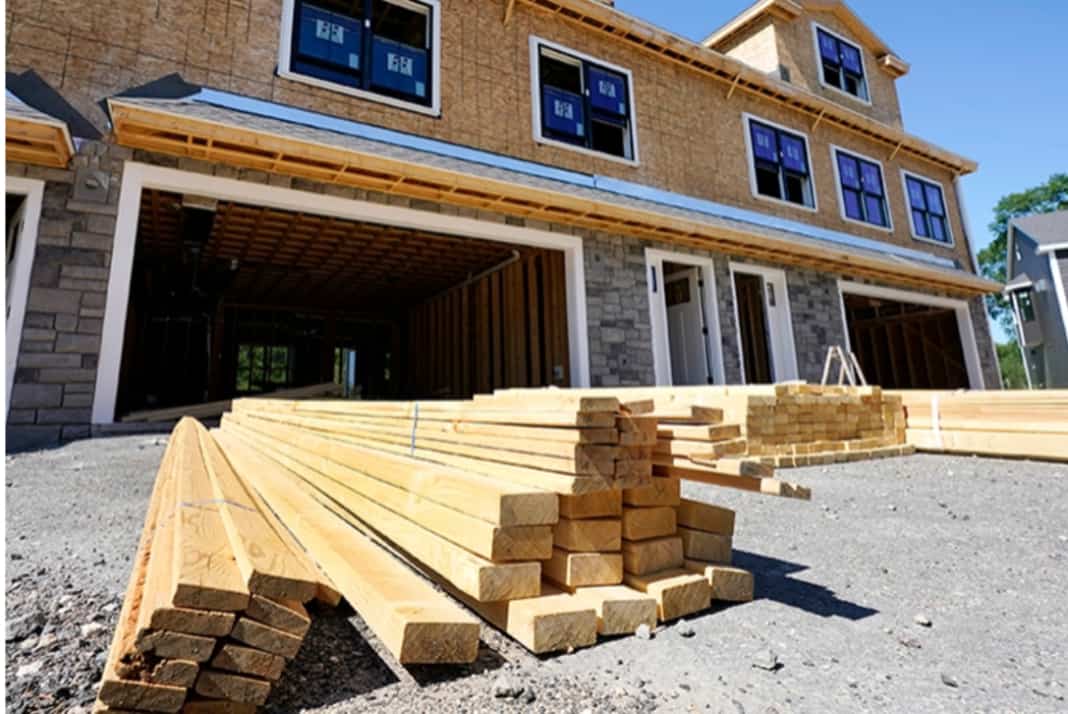Many are wondering where the economy is going. Many of the tech oligarchs are even laying off tens of thousands of workers in anticipation of a slowdown this year, and certainly, the single-family housing industry is crashing as we speak. And since housing construction reportedly drives 15% to 18% of the economy, that will have a big negative impact.
There will be some benefits to a slowdown, such as a large decline in the price of lumber for multi-family construction; lumber being the largest component in single-family and multi-family construction. Lumber used to cost $320 to $500 per 1,000 board foot before the pandemic but shot up to $1,670 during the government imposed shut-downs, but has settled down to around $365 recently. Unfortunately, recent higher interest rates have offset those savings.
Interestingly, I am refinishing a floor, and the flooring I am told is now “on sale.” I haven’t heard that in a while. I think we may see more sales as retailers try to dump excess inventory heading into the recession, (although labor costs have not decreased.)
There are a few challenges with this recession and the Fed’s response to it. First, the booming economy was temporary; a response to the prior pandemic economy. It would have fixed itself if given time as suppliers ramped up and added manufacturing capacity just as there has been a massive expansion of the distribution and storage industry over the last year – if, if Biden hadn’t continued to pay 4 million workers to stay home.
The Fed wants the economy to tank because that will reduce demand, but it will also reduce future manufacturing supply – leading to more inflation. Take multi-family construction; with high-interest rates, many projects in the pipeline ready to start this spring will be postponed, which will reduce the supply of MF housing, thereby causing rents to increase again in 2023 through 2025. (There’s a massive shortage of MF housing nationwide.)
The second challenge is that the Biden administration caused the massive expansion of federal government spending, nearly $6 trillion in fact, and instead of limiting Biden in his use of the credit card, the Federal Reserve Bank signed him up for more credit, printing $6 trillion in new money supply! It’s like a parent giving one child – the shopping addict – another credit card under the theory that you’re just helping him through a rough spot. Then the Fed punished both children by taking away the credit cards from both even though one behaved appropriately.
The same is true now. The Fed is punishing certain sectors of the private economy even though they didn’t cause inflation; it was caused by the Biden administration and the Fed itself. That means that the Fed’s medicine to cure the problem of inflation is targeting the wrong patient. The Fed is crashing certain sectors of the private economy while it continues to provide more credit to the problem child; Biden. Recent proof – the new $1.7 trillion spending plan! The Fed can target the private sector with higher rates, but that isn’t stopping the cause.
In Wisconsin 2022, there was $1.5 billion (yes, billion) in new spending referendums approved by schools that will compete with the private sector in 2023 for construction materials and labor. Governments and schools don’t care what interest rates are (they borrow at lower rates then the rest of us), and they will tie up commercial contractors for the next two years, which will keep construction materials and labor tied up and priced higher than otherwise, i.e. no recession for them.
I’ve been saying for months now that I see a split economy coming in 2023; the haves and the have-nots. The government will be the haves along with larger commercial contractors and the have-nots will be the housing sector and its builders. Retailers will also be in that category too.
I see inflation coming down some more in 2023, but remaining stubbornly higher than the Fed’s 2% target. This means that, like what occurred in 1979, the Fed will probably continue to raise rates even higher and lots of businesses and families will suffer from the government’s excess spending. The Fed will also jeopardize the government’s financial creditworthiness because the cost of interest will now exceed $1trillion per year. Yea, that’s the interest alone! Talk about insanity.
About Terrence R. Wall
Terrence R. Wall holds a degree from the UW in economics and an M.S. in real estate analysis and valuation and is a real estate developer. Disclaimer: The opinions of the writer are not necessarily those of this publication or the left!
Table of Contents












